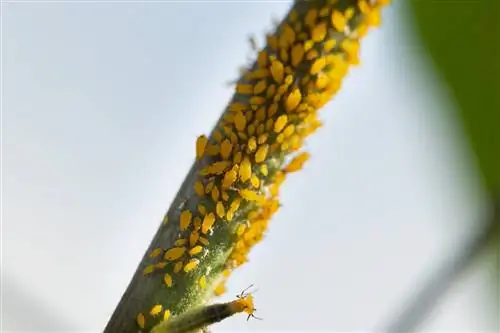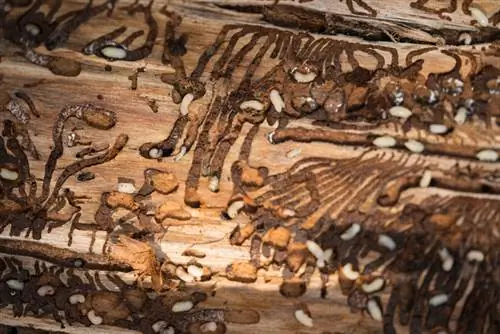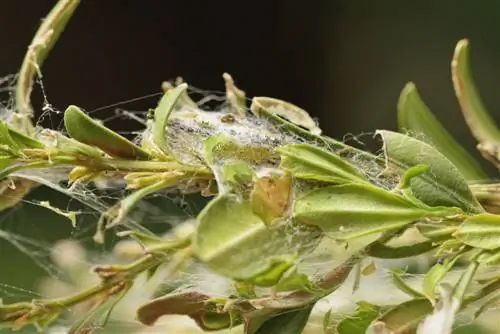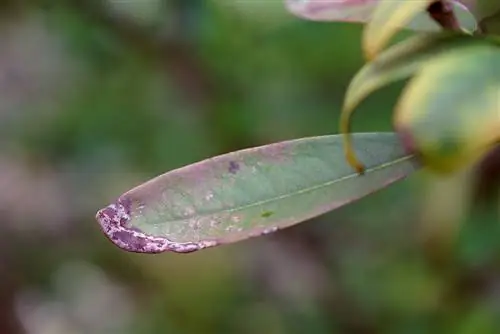- Author admin [email protected].
- Public 2023-12-16 16:46.
- Last modified 2025-01-23 11:21.
Even in ancient Rome, garden beds were bordered with low boxwood hedges. With their campaigns of conquest, the Romans eventually spread the book throughout Europe, from where it increasingly began its victorious campaign from the 16th century onwards. Since then, the evergreen tree has become an integral part of every garden, but in recent years it has been increasingly threatened by fungal diseases such as wilt.

How can you prevent boxwood wilt?
Boxwood wilt is caused by fungal diseases such as Phytophthora wilt and Fusarium buxicola wilt, which cause root rot or death of leaves and shoots. To prevent this, you should ensure well-drained soil, sufficient pH, organic fertilization and good drainage and avoid waterlogging.
Various forms of wilt disease
In addition to the dreaded shoot death, wilting diseases also kill many box trees. The damage pattern is often very similar to that of shoot death and can be easily confused with it, but the pathogen and causes are different.
Phytophthora wilt
Phytophthora wilt is characterized by very poor growth of diseased plants. The foliage turns light green and curls up. The reason for this damage is root rot, which is caused by fungi from the Phytophthora group and almost exclusively affects boxwood trees that grow in wet soil, as well as other plants. Phytophthora wilt is the characteristic damage caused by a boxwood tree suffering from waterlogging.
Fusarium buxicola wilt
Box wilt, caused by the fungus Fusarium buxicola, leads to the death of leaves and shoots, primarily on weakened plants. However, in many cases only individual parts of the plant are affected.
Prevention
Since fungal diseases are difficult to combat and, especially with Phytophthora wilt, rescue is no longer possible if an infestation is only noticed late, you should focus on prevention. The following measures are suitable for this:
- Provide humus-rich and well-drained soil.
- If the pH value is below seven, you should raise it by liming.
- Avoid nitrogen fertilization.
- Preferably use organic fertilizer (€27.00 on Amazon), such as compost.
- Always water from below.
- Sprinkling from above is not permitted, especially in warm weather.
- Avoid waterlogging, for example through good drainage.
- Always disinfect cutting tools before and after each use.
- Never cut when it rains.
Combat
Effective control of wilt diseases is more successful the earlier the infection is discovered and treated. These measures have proven to be useful:
- When infestation begins, cut the boxwood back to the he althy wood.
- Be sure to collect affected plant parts from the ground and dispose of them with household waste.
- Replace the top layer of soil, as fungal spores can survive here for several years.
- If necessary, clear the affected boxwood.
- In this case, choose a different type of plant due to the risk of renewed infection.
Tip
Some boxwood varieties are less susceptible to wilt pathogens than others. Species that look similar but are less susceptible to disease are also a good alternative.






